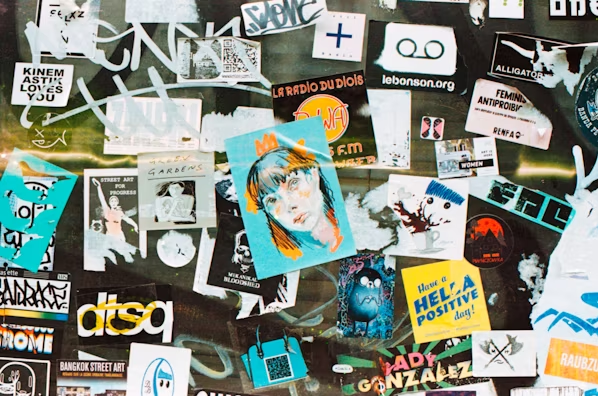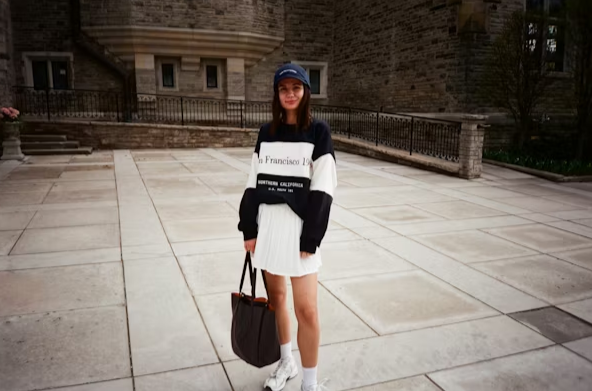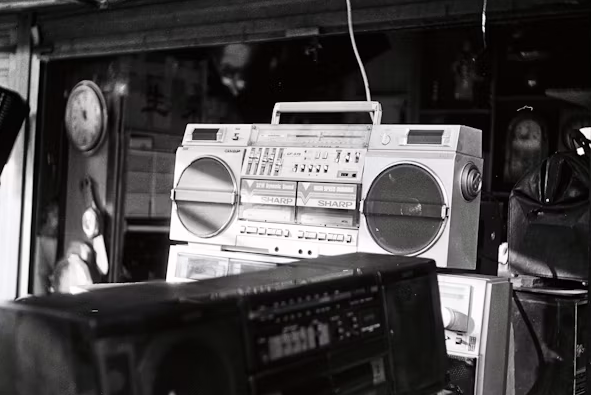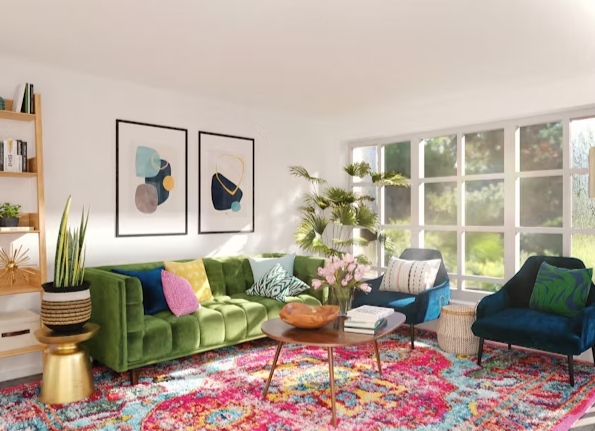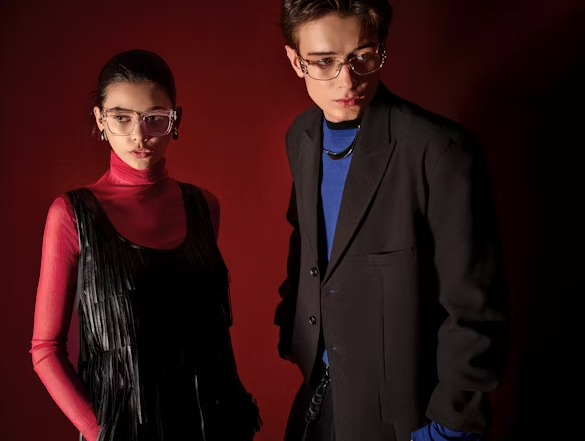There’s something electric happening in fashion, music, and design right now, and if you lived through the 1990s, you’ve definitely noticed it. Walk down any urban street, scroll through Instagram, or flip through a fashion magazine, and you’ll see unmistakable echoes of that decade everywhere. The chunky sneakers, the slip dresses, the chokers, the baggy jeans—they’re all back, and they’re being embraced by a generation that was barely alive when these trends first dominated the scene.
But this isn’t just about clothes coming back into style. The 90s revival represents something deeper: a collective yearning for a time that feels simultaneously simpler and more optimistic. It’s nostalgia, yes, but it’s also a cultural reset button that we’re all pressing together. Whether you’re someone who lived through the original moment or you’re discovering these aesthetics for the first time, the pull of the 90s is undeniable. Let’s explore why this decade has such a powerful grip on our current cultural imagination and how it’s manifesting in everything from what we wear to how we decorate our spaces.
Why the 90s? Understanding Our Collective Nostalgia
Nostalgia typically operates on a 20-30 year cycle, which means the 90s are hitting their sweet spot right now. But timing alone doesn’t explain the intensity of this particular revival. The 1990s occupy a unique position in modern history—they were the last decade before the internet fundamentally changed how we communicate, consume media, and present ourselves to the world.
Think about it: the 90s were the final era when you could truly disconnect. There were no smartphones demanding your attention, no social media feeds to curate, no constant pressure to document every moment of your life. You made plans with friends and actually had to stick to them because you couldn’t just text “running late.” You listened to entire albums because streaming didn’t exist. You watched TV shows when they actually aired, and then discussed them at school or work the next day because there was no instant online commentary.
This analog quality makes the 90s feel almost mythical to younger generations, while those who lived through it remember a kind of freedom that’s hard to find today. The decade offered a goldilocks moment—technology was advancing rapidly enough to feel exciting (think dial-up internet, CD players, and early video games), but it hadn’t yet become overwhelming or invasive.
Beyond the technology divide, the 90s represented a period of relative economic prosperity and cultural optimism in many Western countries. The Cold War had ended, the economy was growing, and there was a genuine sense that things were getting better. Compare that to today’s climate of political polarization, economic uncertainty, and environmental anxiety, and it’s easy to see why we’re drawn to a decade that felt more hopeful.
The Fashion Revolution: From Grunge to Glam
The 90s were remarkable for their fashion diversity. Unlike some decades that can be defined by one overarching aesthetic, the 90s offered multiple distinct style movements, often existing simultaneously. This variety is partly why the revival has been so robust—there’s something for everyone to latch onto.
Grunge dominated the early part of the decade, with its deliberate anti-fashion stance. Flannel shirts, ripped jeans, Doc Martens, and a general attitude of not caring what anyone thought became the uniform of a generation. Bands like Nirvana and Pearl Jam weren’t just making music; they were creating a visual language that rejected the polished excess of the 80s.
But the 90s also gave us minimalism. Think Calvin Klein’s clean lines, slip dresses worn with barely-there makeup, and Kate Moss’s waif-like presence redefining beauty standards. This was fashion stripped down to its essence—simple, understated, and effortlessly cool.
Then there was the sportswear explosion. Hip-hop culture brought baggy jeans, oversized jerseys, Timberland boots, and athletic wear into mainstream fashion. Brands like Tommy Hilfiger, FUBU, and Nautica became cultural touchstones. This was also when sneaker culture really took off, with certain shoes becoming status symbols and collectibles.
And we can’t forget the accessories that defined the era. Chokers became ubiquitous, worn by everyone from pop stars to high school students. Platform shoes added inches to everyone’s height. And eyewear became a genuine fashion statement—whether you were channeling Neo from The Matrix with tiny rectangular frames or embracing oversized, colorful styles, your 90s sunglasses said something about who you were and what tribe you belonged to. The decade’s eyewear ran the gamut from tiny oval John Lennon-inspired frames to wrap-around sports styles to colorful translucent plastic that matched your windbreaker.
What makes this era’s fashion so appealing today is its playfulness and lack of pretension. Unlike the heavily curated Instagram aesthetic that dominates now, 90s style had room for experimentation and mistakes. You could mix and match seemingly incompatible elements and somehow make it work. That freedom feels refreshing in our current moment, where algorithms increasingly dictate what’s “in” and what’s not.
The Sound of a Generation Returns
Music is perhaps where the 90s influence feels most pronounced right now. The decade gave us genre-defining movements that continue to shape what we listen to today. Alternative rock went mainstream, hip-hop came of age, electronic music found its footing, and pop reached new heights of production sophistication.
Current artists aren’t just influenced by 90s music—they’re actively sampling it, collaborating with artists from that era, and recreating its sounds. Olivia Rodrigo’s angsty pop-punk draws clear lines to Alanis Morissette. Dua Lipa’s disco-influenced pop shares DNA with artists like Madonna and Janet Jackson. Travis Scott and other modern rappers frequently sample 90s hip-hop, paying homage to the golden age of the genre.
But beyond specific sonic influences, there’s something about 90s music’s production aesthetic that contemporary artists find appealing. The slightly lo-fi quality, the real instruments mixed with early digital production, the emphasis on melody over heavily processed vocals—these elements feel authentic in a way that’s hard to achieve with today’s ultra-polished production standards.
The 90s also represent the last great era of physical music media. CDs were at their peak, and the ritual of buying an album, reading the liner notes, and listening straight through was part of the experience. Now, with vinyl making an unexpected comeback, younger listeners are discovering the appeal of music as a physical object, not just a streaming file. Many are specifically seeking out 90s albums on vinyl, creating a market for reissues and special editions.
Music festivals and tours have caught onto this nostalgia as well. Bands that broke up in the early 2000s are reuniting. One-hit wonders from the 90s are booking sold-out shows. And new festivals dedicated to 90s music are popping up, offering millennials a chance to relive their youth while introducing Gen Z to the era’s sounds.
Interior Design: The 90s Aesthetic in Your Space
The 90s revival isn’t confined to what we wear or listen to—it’s also influencing how we decorate our living spaces. Interior design from the decade featured distinct characteristics that are finding new life in contemporary homes.
Remember the Memphis design movement that carried over from the 80s into the early 90s? Those geometric patterns, bold colors, and playful shapes are trending again. Pinterest boards dedicated to “90s interior design” overflow with images of colorful furniture, patterned rugs, and accent pieces that would have looked at home in an episode of “Friends.”
The decade’s color palette is also making a comeback. Teal and purple combinations, earth tones mixed with bold accents, and that particular shade of mauve that seemed to be everywhere—designers are incorporating these colors into modern spaces, often with a slightly updated twist. The key is using them intentionally rather than accidentally recreating your childhood bedroom.
Furniture styles from the 90s are being rediscovered too. Futons (ironically or not), bean bags reimagined for adult spaces, and platform beds all reflect 90s sensibilities. There’s also renewed interest in the tech aesthetic of the era—transparent electronics, metallic finishes, and that particular shade of beige that every computer seemed to come in.
But perhaps the most interesting aspect of 90s interior design revival is the attitude toward technology in the home. The 90s were when personal computers became common household items, but they weren’t yet ubiquitous or invisible. There was a designated “computer room” or “computer corner,” and technology had a defined place rather than infiltrating every aspect of our living spaces. Some people are now trying to recreate that separation, designating specific areas for screens and keeping other spaces deliberately analog—a direct response to our current moment of constant connectivity.
Plants were also huge in 90s interior design, and that trend has certainly carried forward. But whereas current plant trends lean toward succulents and fiddle leaf figs, the 90s favored ferns, pothos, and those hanging plants that seemed to be in every apartment. There’s something appealing about the lush, slightly overgrown look that was popular then—it feels more relaxed and less Instagram-curated than some of today’s highly styled plant displays.
Technology Nostalgia: When Limitations Felt Like Freedom
One of the most fascinating aspects of 90s nostalgia is our romanticizing of the decade’s technology—or lack thereof. We’re nostalgic for limitations, for boundaries, for a time when technology served us rather than demanding our constant attention.
Consider the resurgence of “dumbphones”—basic mobile devices that only make calls and send texts. Some people are deliberately downgrading from smartphones, craving the simplicity of 90s-era communication. Similarly, digital detoxes and screen-free time have become wellness trends, as people try to recreate the natural disconnection that was just normal life in the 90s.
Film photography is experiencing a genuine revival, with both vintage cameras and new film stocks finding eager audiences. The limitation of having only 24 or 36 exposures per roll makes you more intentional about what you photograph—a stark contrast to the hundreds of nearly identical photos most of us have on our phones.
Even in gaming, there’s substantial nostalgia for 90s systems and titles. Retro gaming has moved from niche hobby to mainstream interest, with Nintendo successfully marketing classic game re-releases and mini versions of old consoles. The pixelated graphics and simpler gameplay mechanics feel charming rather than primitive to many modern players.
This technology nostalgia isn’t really about wanting to give up modern conveniences. Instead, it’s about recognizing what we’ve lost in our rush toward constant connectivity and unlimited options. The 90s offered a sweet spot where technology was exciting and useful without being overwhelming—and that balance is what people are trying to recapture.
The Cultural Impact: What This Nostalgia Says About Us
The 90s revival tells us something important about our current cultural moment. When a society becomes deeply nostalgic for a particular era, it’s often because the present feels uncertain or overwhelming. The pandemic accelerated many trends that were already making people anxious—remote work blurring the lines between personal and professional life, social media creating unrealistic expectations, political polarization fracturing communities.
The 90s offer an escape from all that. They represent a time before social media anxiety, before doom-scrolling, before every political disagreement became a battle line. It’s worth noting that this is partly a selective memory—the 90s certainly had their problems, from economic recessions to international conflicts to social issues that were often ignored. But what we’re nostalgic for isn’t the actual decade in all its complexity; it’s the feeling of possibility and optimism that characterized it.
For younger generations who didn’t live through the 90s, the appeal is different. They’re drawn to the aesthetic and cultural artifacts of an era that feels refreshingly uncomplicated compared to their own experience of growing up online. There’s an authenticity to 90s culture that resonates—people weren’t performing for social media, they were just living their lives.
This generational divide in how we approach 90s nostalgia is interesting. Millennials are reliving their youth, while Gen Z is discovering a pre-digital world they never knew. But both groups find something valuable in this decade’s cultural output, which speaks to its enduring relevance.
How to Embrace the 90s Revival Without Looking Like You’re Wearing a Costume
If you’re drawn to 90s aesthetics but worried about looking dated, the key is selective incorporation rather than wholesale recreation. Modern interpretations of 90s style tend to work better than exact replicas.
Start with one or two statement pieces rather than a full head-to-toe 90s outfit. A vintage band t-shirt paired with modern jeans works better than trying to recreate an entire look from a 1995 episode of “My So-Called Life.” Similarly, one signature 90s accessory—whether that’s a particular style of bag, shoes, or jewelry—can add vintage flair without overwhelming your outfit.
Quality matters more now than it might have originally. The beauty of revival fashion is that you can find updated versions of classic pieces made with better materials and construction. A modern take on a 90s silhouette will generally fit better and last longer than hunting down original vintage pieces.
The same principle applies to interior design and other aesthetic choices. Rather than recreating a 90s space wholesale, incorporate elements that speak to you. Maybe it’s a bold color on an accent wall, or some geometric patterns in your throw pillows, or a few pieces of vintage tech displayed as art. The goal is to evoke the feeling of the era rather than create a museum exhibit.
Looking Forward: Will the 90s Revival Last?
Like all trend cycles, the 90s revival will eventually give way to something else—likely nostalgia for the early 2000s, which is already beginning to bubble up around the edges of popular culture. But the impact of this particular revival may last longer than most.
The 90s occupy such a unique position historically—the last pre-internet decade—that they’ll likely maintain a special cultural significance even after the main trend cycle passes. The lessons we’re learning about the value of disconnection, the importance of physical media and experiences, and the appeal of authentic, un-curated expression will probably outlast the aesthetic trends themselves.
Moreover, the quality and diversity of 90s cultural output ensures that these artifacts will remain relevant. Great music is great music regardless of when it was made. Strong design principles don’t become less valid with time. The 90s gave us enough material to continue mining for years to come.
What’s most interesting about this revival is how it’s forcing us to reconsider our relationship with technology and constant connectivity. The 90s aren’t just a style to borrow from—they’re a reminder of a different way of living that many people find appealing. Whether we can actually recreate any of that feeling in our current technological landscape remains to be seen, but the effort itself is valuable.
Conclusion: Embracing the Best of Then and Now
The 90s revival is more than a passing trend—it’s a cultural conversation about what we value and what we’ve lost in our rapid march toward technological saturation. By looking backward, we’re actually trying to move forward more thoughtfully.
The beauty of nostalgia is that it allows us to cherry-pick the best elements of the past while leaving behind what didn’t work. We can embrace the aesthetic freedom and playfulness of 90s fashion without the body-shaming and limited representation. We can appreciate the era’s music while also celebrating today’s incredible diversity of available sounds. We can create spaces that evoke 90s design principles while incorporating modern comfort and sustainability.
Whether you’re someone who lived through the 90s or you’re discovering this era for the first time, there’s value in understanding why this decade resonates so strongly right now. It offers lessons about balance, authenticity, and the importance of being present in our offline lives. The 90s might be back, but we’re not just replicating them—we’re remixing them for a new era, taking what worked and adapting it to fit our current needs.
So go ahead—dig out those old CDs, experiment with bold fashion choices, create a space that feels authentic to you, and maybe spend a little less time online. The 90s revival isn’t really about going backward; it’s about remembering what made us happy and finding ways to recreate that feeling in our modern lives. And honestly? That’s pretty cool.

